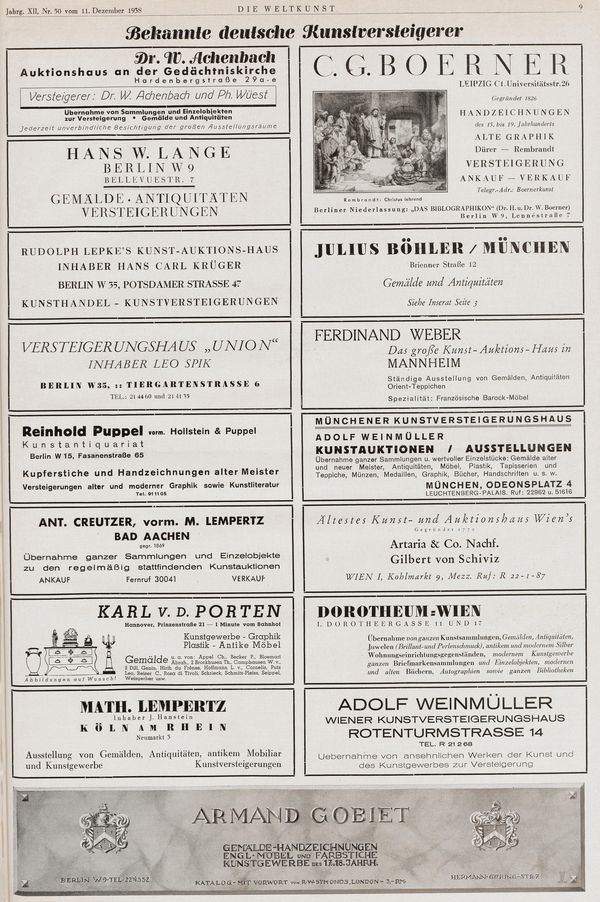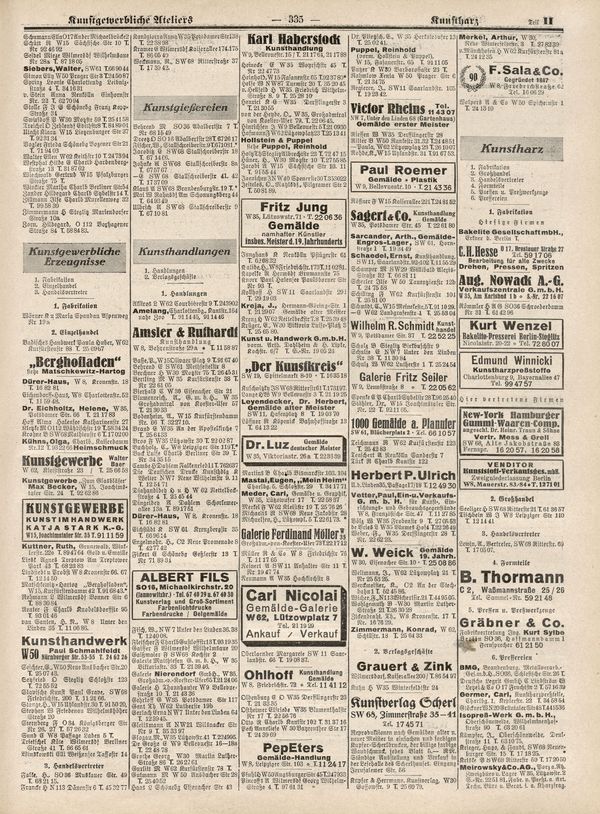| Genre | Painting |
| Materials | Oil on canvas |
| Size | 69,5 x 60,5 cm |
| Signature | unsigned |
Restored with the support of the Ernst von Siemens Kunststiftung
Research status
Provenance is unclear and research continues.
The art market around 1938
This “Portrait of an Art Dealer” gives no clues to the name of the sitter. When the canvas was mounted on a new frame quite recently, the size was altered and the original format changed. It is doubtful, therefore, that the person in the portrait chose this ornamental frame or that the writing on the back will cast any light on the provenance of the work. Forthcoming research will have to answer these questions and others.

Aiding and abetting Nazi looters: prestigious German auction houses advertise art sales in the magazine “Weltkunst”, no. 50, 11 December 1938
Art sale advertisement in the magazine “Weltkunst”, no. 50, 11 December 1938
© Digitalisat: Universitätsbibliothek HeidelbergAlthough we still do not know the identity of the sitter or where he worked, the title and date of the painting suggest an art market setting shortly before the Second World War. For a long time, little was known about the size of that market or about its networks and protagonists. It began to attract attention when research was stepped up into the provenance of art looted by the Nazis. This led to a deeper understanding of how the art trade functioned between 1933 and 1945 as a hub for selling works that had been extorted from victims of persecution, sold below value when their owners went into exile, or plundered during hostilities.
The Berlinische Galerie began promoting this research at an early stage. Since 2006 the Artists’ Archives in the museum have been trawled for information about modern art dealers. A not inconsiderable number of works in our own collection and in many others were not only kept by private owners between 1933 and 1945 but were often managed by art dealers – like the self-portrait of Max Liebermann and Jacoba van Heemskerck’s “Landscape, Picture I” in the Berlin gallery founded by Ferdinand Möller. Letters, receipts and photographs have survived to prove this. As a source they are hard to match, helping to create a documentary trail and to establish provenance. Major projects at the Berlinische Galerie include in-depth scholarly examination of the Ferdinand Möller fonds and opening the Werner J. Schweiger art archive to other researchers.
Fritz Rhein came to Berlin in 1897. He was known as a portrait painter and his services were sought by high society in Berlin. Rhein lived and worked on Lützowufer at the heart of the city’s art market. Possibly the sitter was one of his neighbours.

Art dealers in the Berlin Directory of 1938
Art dealers in the Berlin Directory of 1938
© Repro: Berlinische Galerie